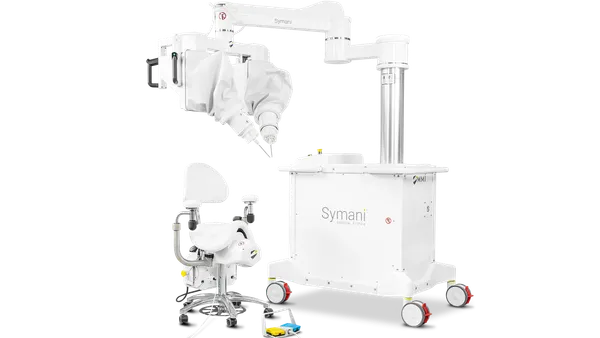Dive Brief:
-
A 10-year study has found percutaneous coronary intervention (PCI) with drug-eluting stents is as safe and effective as coronary-artery bypass grafting (CABG) on multiple measures.
-
In a study presented at the virtual American College of Cardiology meeting and published Monday in Circulation, researchers showed left main coronary artery disease patients who underwent PCI were as likely to suffer major cardiac or cerebrovascular adverse events or die as their counterparts who underwent bypass surgery.
-
While the study did not have a sufficiently large sample size to draw definitive conclusions, the long-term nature of the data led some physicians to frame the findings as supportive of the use of drug-eluting stents in left main patients.
Dive Insight:
Stenting has held its own against CABG in terms of the rates of mortality, myocardial infarction and stroke in multiple randomized clinical trials and registry studies.
Until now, results gathered have typically only tracked outcomes out to five years after treatment. With some studies finding trends that favor CABG as the years pass, the lack of long-term data has left lingering doubts about whether PCI is a good option for left main patients.
The results published on Monday go some way to assuaging those concerns. At 10 years, 30% of PCI patients treated with sirolimus-eluting stents had suffered a major adverse cardiac or cerebrovascular event, as compared to 25% of the CABG cohort. Each cohort had 300 patients. The difference fell short of statistical significance.
PCI also performed comparably to CABG against other endpoints. The researchers saw no statistically significant differences in a composite endpoint covering death, myocardial infarction and stroke, or in the incidence of myocardial infarction or stroke in isolation. The rate of revascularization was higher in the PCI cohort, as it has been in other studies of the two approaches.
While the findings suggest PCI is as good as CABG, the researchers cautioned that the 600-patient trial was underpowered and, as such, “should be considered hypothesis-generating highlighting the need for further research.” However, with the 10-year findings aligning with the results of shorter but better-powered studies, some physicians see the study as supporting the use of PCI in some people.
In a video interview part of ACC's virtual meeting, Deepak Bhatt, the executive director of Interventional Cardiovascular Programs at Brigham and Women's Hospital, said the study shows “either approach is fine in terms of hard outcomes.” However, Bhatt still favors CABG for some patients.
“It doesn’t really change the fundamentals, at least of what I believe. If they’re otherwise a good candidate for CABG, not at high stroke risk, not lots of comorbidities, I think they should just have CABG. But if they have comorbidities or if they have a high stroke risk or they have a very strong patient preference and aversion to surgery, then left main stenting is fine,” Bhatt said.
The findings of the study are relevant to companies including Abbott and Boston Scientific, which respectively make the Xience and Synergy stents for use in left main patients. Abbott contributed to the uncertainty around the long-term performance of PCI when its five-year Xience study linked the approach to a higher incidence of all-cause death than CABG. However, other studies, including the new 10-year assessment, have painted a more positive picture of PCI.












